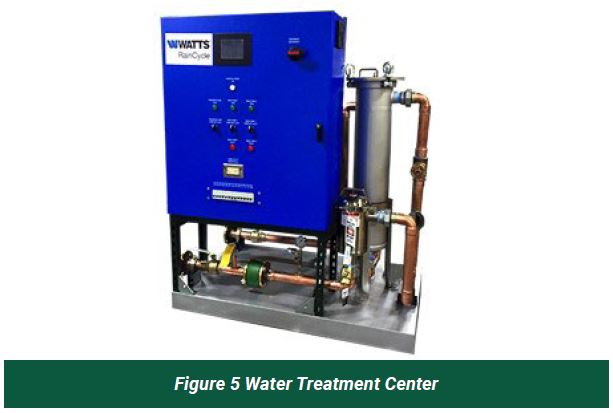
CodeNotes: Rainwater Harvesting Systems in the I-Codes
This CodeNotes resource provides an overview of rainwater harvesting systems is based on the CSA B805/ICC 805-2018 Standard.
This edition of CodeNotes — Rainwater Harvesting Systems — is based on the CSA B805/ICC 805-2018 Standard.
Introduction
The provisions of the CSA B805/ICC 805-2018 Standard for Rainwater Harvesting Systems, serve as an alternative to Chapter 13 of the 2021 International Plumbing Code® (IPC®) for regulating the materials, design, construction, and installation of systems for rainwater collection, storage, treatment, and distribution of non-potable water. The use and application of nonpotable water is mandated to comply with the laws, rules, and ordinances applicable in the jurisdiction.
The Standard first appeared in the 2018 International Residential Code® (IRC®). Although Chapter 13 of the IPC® and Chapter 29 of the IRC® both offer good overall coverage for using rainwater as a nonpotable water source, CSA B805/ICC 805-2018 offers a more comprehensive approach for these systems. The Standard was developed to make it easier for jurisdictions to accept and approve rainwater harvesting systems on a larger scale than had previously been possible. A framework is provided for both designers and code officials to implement systems, with confidence that meet the intent of the building, plumbing, fire, and health codes.
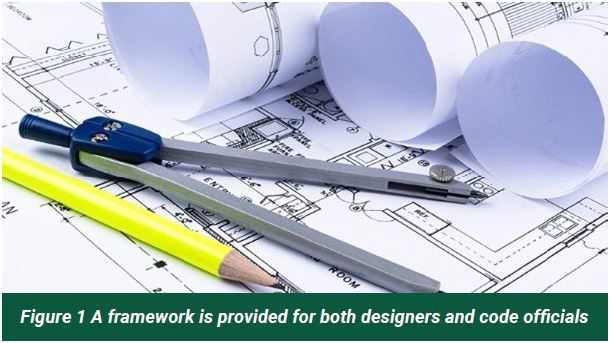
The Standard addresses roof surface rainwater and stormwater reuse. Roof runoff is rainwater that is intercepted by an elevated impervious roof surface that is not subject to pedestrian access Stormwater runoff is rainwater that is not roof runoff. This includes precipitation runoff from rain or snowmelt that flows over land and/ or impervious surfaces. The standard covers rainwater harvesting systems that provide water for single-family residential applications, multi-family residential applications, and non-residential applications.
This Standard does not cover rainwater harvesting systems that provide water for process water systems for industrial or manufacturing purposes; water distribution systems for commercial agriculture processes; or the collection of surface water from lakes, ponds, etc.
For single-family dwellings, this Standard does not require sampling and testing of the output rainwater quality to substantiate performance. It recognizes the lower risk to the public and relies on sound treatment system design and verification of the treatment system operation.
Water Safety Plan (WSP)
The Standard mandates that a WSP is developed for rainwater harvesting systems. WSP’s are intended to recognize, address, and improve water quality and water quality concerns for rainwater harvesting systems intended for potable and non-potable uses. It is important to document the full scope of the rainwater harvesting system to identify system components, scope of system supply, parties responsible for system maintenance, and operational guidelines for the rainwater harvesting system.
Based on the intended uses, the element of a WSP must include:
a. Site assessment for source water suitability
b. Fit for intended uses
c. Hazard identification and risk prioritization
d. System design and identification of control points
e. Operational monitoring, system verification, and response
f. Supporting programs measurements procedures, and documents
Guidance on developing a WSP is included in Annex D. An overview of a WSP is illustrated in Figure 2. This figure references the relative tables from this standard and how they relate to each element of the WSP. The referenced tables can be used to assist in the development of the WSP.
Generally, the Tables presented in this Standard are not intended to be used in isolation. Rather, they are intended to be used in conjunction with the WSP in respect to the design of the treatment system. The following is a simplified description of the use of each Table.
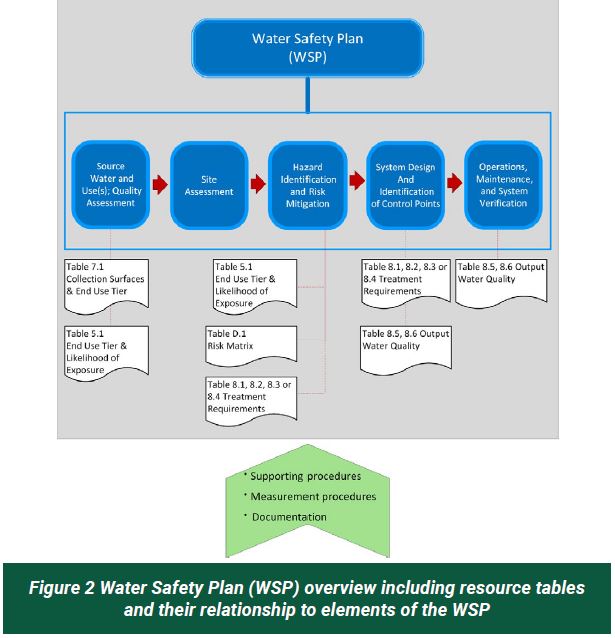
Table 5.1
The end-use tier categorization must be as specified in Table 5.1. Each end-use tier is categorized based on the following three elements:
a. potable or non-potable water quality
b. end uses
c. potential for human contact, including ingestion, inhalation, and skin contact
Note: Rainwater collected must be categorized based on Table 5.1
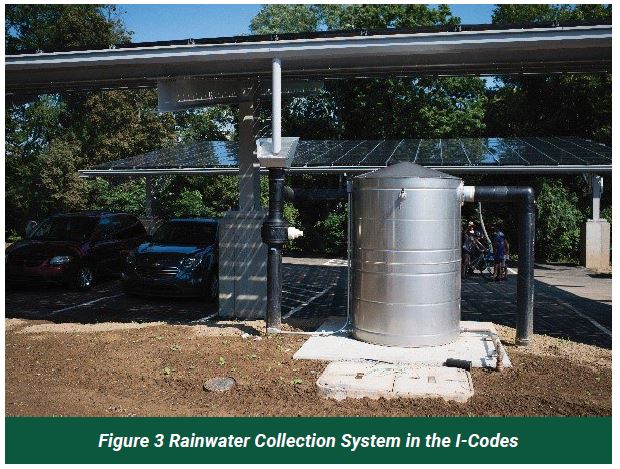
Table 7.1
Subject to the assessment of the WSP, based on the prescriptive approach, collection surfaces must only supply water for the end-use tiers specified in Table 7.1 Where a system supplies multiple end uses, the collection surface must comply with Table 7.1 for each end-use.
Table D.1 Risk Matrix
The party responsible for the WSP should estimate the levels of risk for each hazard-event combination and focus their mitigation and control practices accordingly. See Annex D for additional information.
Table 8.1, 8.2, 8.3, or 8.4
The provisions of Tables 8.1, 8.2, 8.3, and 8.4 with respect to health requirements are subject to the approval of the authority having jurisdiction. These Tables specify minimum performance criteria for each end-use tier in consideration of the health risk and identify possible treatment process options under the “minimum prescriptive requirement” column to meet the specified minimum performance criteria.
While specific treatment technologies are addressed, the use of other treatment processes that meet the required performance criteria is not intended to be excluded by this standard. Any treatment system needs to meet the applicable minimum performance criteria based on an estimated or assumed source water quality. The treatment processes established may differ from the minimum prescriptive requirements depending on the details of the WSP. Therefore, Tables 8.1 to 8.4 need to be used in conjunction with a WSP. Where a rainwater harvesting system uses a combination of roof runoff and stormwater runoff as the source water, either Table 8.2 or 8.4 must be followed, as applicable.
Table 8.5 or 8.6
Water quality results that meet the limits outlined in Table 8.5 or 8.6, as required by the end use and source, must substantiate that hazards are being effectively controlled. Corrective action must be taken if output water quality requirements are not met. The values in Table 8.5 or 8.6 are provided only as suitable indicator parameters to substantiate system performance and cannot be used as the only or primary criteria for the design of a treatment system.
System Documentation
A manual must be supplied with all systems and include standard operating procedures under normal operating conditions, such as system start-up and shutdown procedures, as well as contingencies and emergency procedures for system failure, loss of treatment, or other emergency conditions. The manual must include a system description, detailed system piping and wiring schematics, and locations of all system components as installed, including manufacturer and model numbers. The manual must provide a maintenance schedule and procedures for all system components requiring periodic maintenance. Consumable parts, including filters, must be noted along with part numbers.
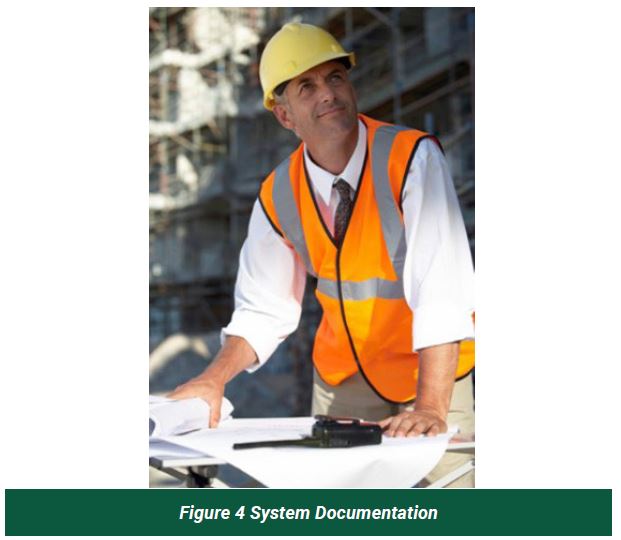
Distribution Systems
Distribution systems have to be designed and installed in accordance with the (IPC®) for the intended application. Distribution piping must be identified and marked in accordance with the (IPC®).
Note: Irrigation piping is excluded from the scope of this Standard
